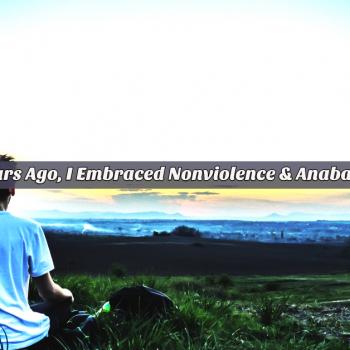I want to invite you to read a quick pdf file that is titled: Why Penal Substitution Doesn’t Work with Asian-Americans, by Mako Nagasawa. This will take you maybe five minutes but is completely worth it. If you don’t, the rest of this post may not make complete sense.
A disclaimer I should start with is that this article is critiquing the popular form of “penal substitution” NOT “substitutionary atonement.” He and I both affirm that Christ died as our substitute, but we remain unconvinced that Jesus was the object of God’s direct wrath. This, my friends is cosmic child abuse and inconsistent with the character of God. Now, I also should say that there are some thoughtful folks out there that use the language of “penal” but mean something a bit more nuanced than God’s wrath being poured out on the Son. I am not in disagreement with those folks so much.
It is my conviction that Jesus did indeed suffer wrath, but not directly from the Father, but from the powers of evil. The most helpful image of this is found in the “Lion, Witch, and the Wardrobe.” The White Witch (Satan) wrathfully kills Aslan (Jesus) as a substitute for Edmund the traitor (whom is representative of fallen humanity). Notice that in this image, Jesus is enduring the wrath of Evil so that humanity doesn’t have to.
Now, in this article, we will see that shame is a focus. I will be interested to hear your thoughts. But now, here are some of mine.
Mako Nagasawa’s piece, “Why Penal Substitution Doesn’t Work with Asian-Americans” has several missional implications. It demonstrates how our dominant theology of atonement has been highly influenced by white American cultural identity issues. Whites over the past hundred years have understood themselves to be basically good, with some “side problems” that they are trying to improve. Even though these groups (which I am a part to some extent) see life this way, my observation is that they often will appeal to the “depravity” of humanity. Here has been the gap in a nutshell: people have to get convinced of their inherent “badness” in white culture while in actuality they feel like they are “good.” So, fundamentalism has produced various approaches to evangelism (best example would be “way of the Master”) that produce artificial guilt (Have you ever committed adultery?… How about lust? … Well, if you have lusted you are an adulterer… Do you see how you are not actually as good as you think you are? … God’s standard of goodness is perfection and based on your answers, you are not perfect; you are a Lawbreaker.) Perhaps the fundamentalist model is trying to appeal so much to guilt, that they have lost biblical theology in the process!
Now on the other side of things, we have Asian Americans who believe that they are inherently “bad” because any amount of “shame” is too much. Mako appeals to a new way of telling the Jesus story, that from his perspective (and mine as well) is more biblical and more missionally relevant for his people. Seeing a Jesus who absorbs your shame and conquers it in resurrection gives Asians a purpose to live. Their shame is removed and their set free to live in the Spirit to bring about new creation. The implication of this for mission is that we must stop imposing White fundamentalist values on others who don’t share the same identity, and begin listening to the voices in the margins of theological discourse (like Nagasawa). We must recognize that imposing our “western” views on “eastern” minds will hinder the impact of transformation that could be happening in the Asian-American culture!
Any thoughts?













